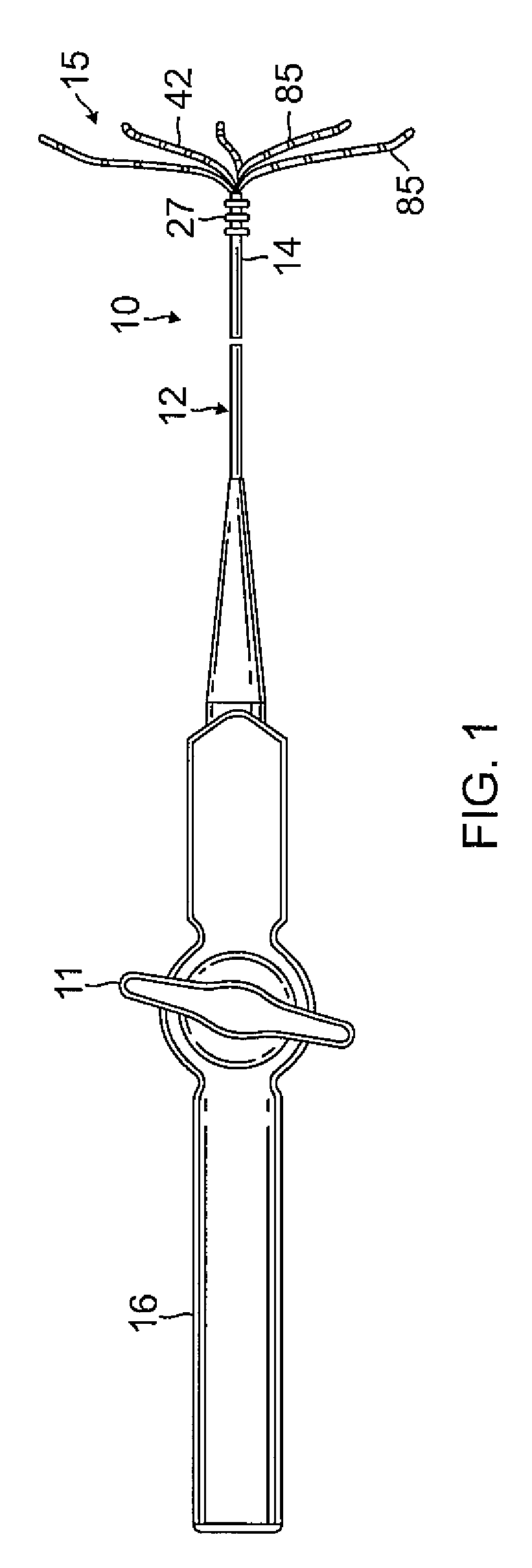Catheter spine assembly with closely-spaced bipole microelectrodes
a bipole microelectrode and catheter spine technology, applied in the field of electrophysiology catheters, can solve the problems of difficult to determine, manufacturing and assembling catheter spines with closely and precisely spaced ring electrodes, and difficult to achieve spacing, so as to reduce the detection of undesirable noise.
- Summary
- Abstract
- Description
- Claims
- Application Information
AI Technical Summary
Benefits of technology
Problems solved by technology
Method used
Image
Examples
Embodiment Construction
[0038]Referring to FIG. 1, in some embodiment of present invention, a catheter 10 includes a catheter body 12, an intermediate deflection section 14, a distal electrode assembly 15, and a control handle 16 proximal of the catheter body 12. The distal electrode assembly 15 includes a plurality of spines 42, each spine carrying at least one pair of closely-spaced bipole microelectrodes 85, wherein the microelectrodes of a pair has a separation space gap distance therebetween of no greater than about 200 microns.
[0039]In some embodiments, the catheter body 12 comprises an elongated tubular construction, having a single, axial or central lumen 18, as shown in FIG. 2. The catheter body 12 is flexible, i.e., bendable, but substantially non-compressible along its length. The catheter body 12 can be of any suitable construction and made of any suitable material. A presently preferred construction comprises an outer wall 17 made of a polyurethane, or PEBAX. The outer wall 17 comprises an imb...
PUM
| Property | Measurement | Unit |
|---|---|---|
| space gap distance | aaaaa | aaaaa |
| width | aaaaa | aaaaa |
| width | aaaaa | aaaaa |
Abstract
Description
Claims
Application Information
 Login to View More
Login to View More - R&D
- Intellectual Property
- Life Sciences
- Materials
- Tech Scout
- Unparalleled Data Quality
- Higher Quality Content
- 60% Fewer Hallucinations
Browse by: Latest US Patents, China's latest patents, Technical Efficacy Thesaurus, Application Domain, Technology Topic, Popular Technical Reports.
© 2025 PatSnap. All rights reserved.Legal|Privacy policy|Modern Slavery Act Transparency Statement|Sitemap|About US| Contact US: help@patsnap.com



